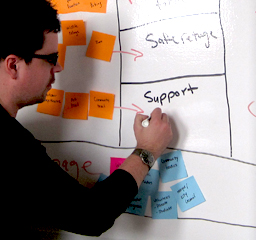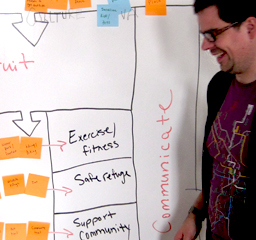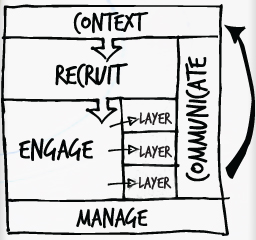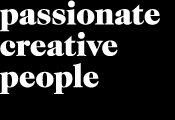What is Culture Canvas™?
Creating a visual canvas is a fantastic way to relay abstract thoughts—especially if you’re trying to sell an idea or generate more ideas from a larger group. Culture Canvas works as a visual design tool because it adds weight to the thoughts and ideas contributed by the team.
Culture Canvas was created by Machteld Faas Xander to help design sustainable communities. The tool helps us focus on the interactions between people—and it helps us keep the whole complex system in a single view. We’ve come to understand that communication and layers of engagement are critical to keeping participants involved and contributing.
Here’s how to use it: Communities, whether online, in a company or within a city, are complex systems involving numerous people. The Culture Canvas, developed by Machteld Faas Xander, is a tool for quickly exploring the core elements that connect and support successful communities.
Culture Canvas can be used as quick assessment of an internal community and completed individually, or it can be used as a larger exercise involving numerous stakeholders.
Here’s how you do it: As with all canvas exercises, they work best when posted large on a wall. You can draw one on a whiteboard or use a large piece of paper. Whether alone or with many people—you’ll need the following items to complete your canvas:
- Sticky notes
- Markers
- A camera or method to take down what you produce



Step 1.
It’s best to start with the Context: who are the people involved? What is the purpose or why of the community? What are the goals of the community? Where is the place? Begin by discussing these four elements that make the context and use the sticky notes to map out the pieces. Can your group answer questions about the people, the why and the goals? This sets the foundation for any community building exercise.
Step 2.
Map out how the people you’ve identified will be brought into the community—what are the channels you’ll use to recruit them? Have everyone use the sticky notes to post ideas. Depending on the number of ideas generated, you can cluster the answers and create larger categories.
Step 3.
This can be the largest section of the canvas—map out the layers of content. We use content broadly when referring to anything a person can interact with. In an online context, content would obviously refer to a blog post or video series. When talking about a neighbourhood, for example, we’d look at content as being a new park or espresso bar. Depending on the people you’ve imagined, they will need various layers of content to keep them engaged.
Step 4.
Finally, map out the channels for communicating with your community. Creating a blog post or community event is not enough—you need to consider how you will connect the layers of content with the people from the context. It’s a constant cycle. Each layer of content requires a few options for communication—depending on the people involved.
Step 5.
Once you’ve mapped out your first version of your community, you can use a second canvas to map the next iteration. Communities are fluid and require constant attention. The espresso bar, as a new piece of content, begins to lose its luster after a little while. So the next layer of content might be a Friday night promotion of some kind, or other ways to engage the community. The same blog content week after week will eventually get tired if you don’t rethink that layer of engagement and consider the people involved.
Culture Canvas Summary / Notes
Of course, all of this work has to be done by someone. The bottom element of the Culture Canvas is Manage. Who is going to do the work and make the website blog, community project or team interactions meaningful for the long-term? Getting the group to take ownership or help identify what needs to be done can help with the critical and often missed piece.
The Culture Canvas is a great tool for quickly assessing a community and helping to visualize the complex interactions that make successful communities work. Keeping a picture or smaller version of each iteration will help you keep continuity within the community as well. When it works really well, the Culture Canvas helps as a planning and strategy tool—providing a great way to assess your success as well.


For Inquiries
Contact Alison De Muy
Phone: 519 576 6422 ext. 116
Email: alison@machteldfaasxander.com
Website: machteldfaasxander.com
